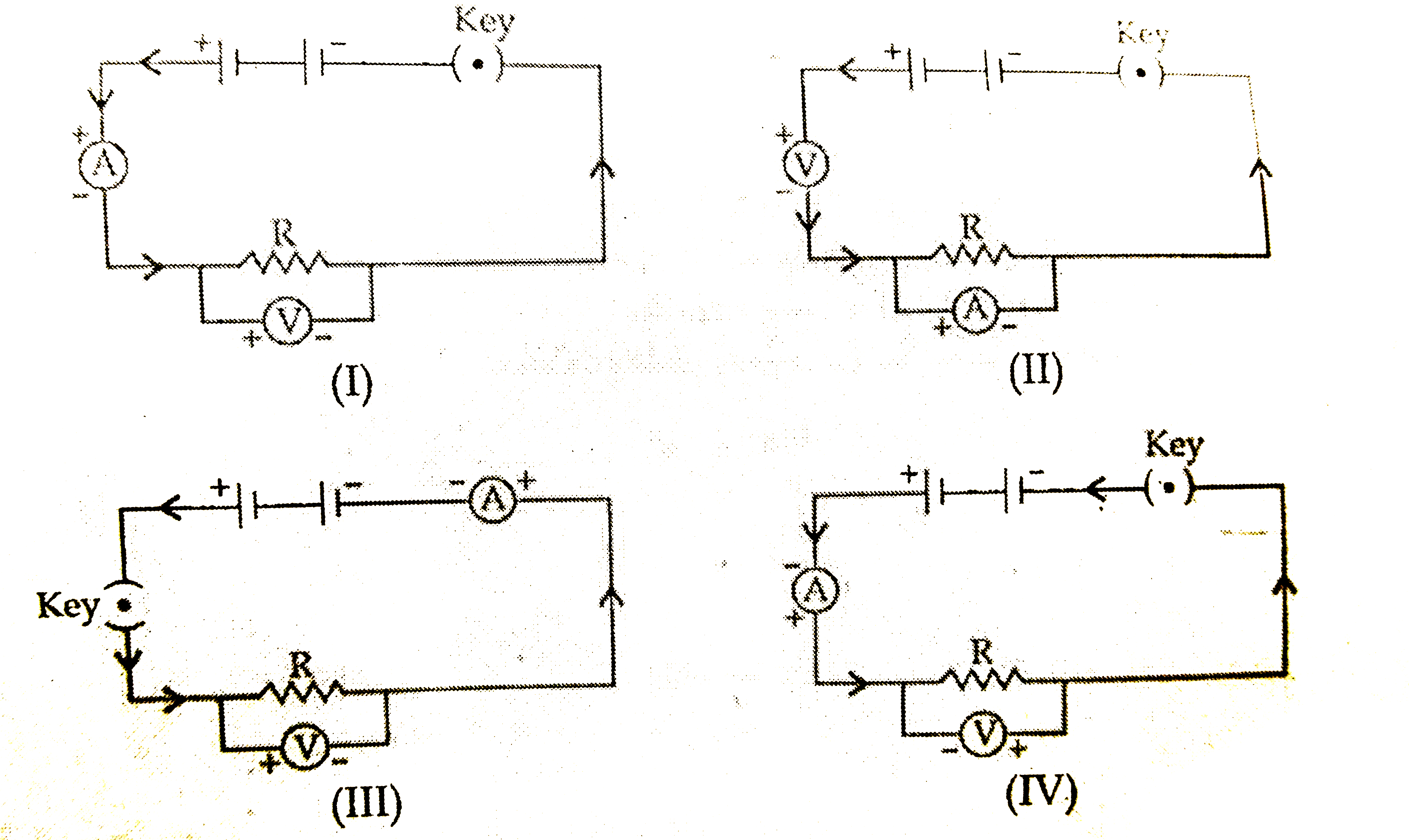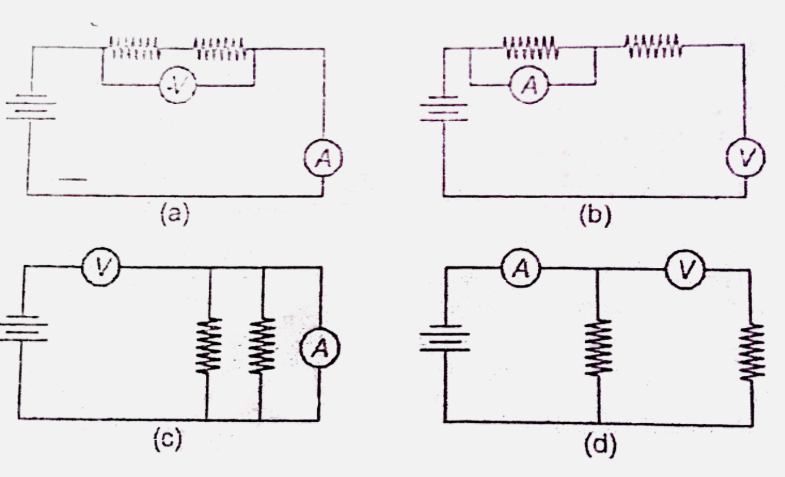Draw a graph of Potential difference (V) versus Current (I) for an ohmic resistor.
To draw a graph of Potential Difference (V) versus Current (I) for an ohmic resistor, we can follow these steps:
1. Understand Ohm's Law:
- Ohm's Law states that the potential difference (V) across an ohmic resistor is directly proportional to the current (I) flowing through it. This can be expressed mathematically as:
V=I⋅R
where R is the resistance of the resistor.
2. Identify the Axes:
- On the graph, we will place the Potential Difference (V) on the vertical (y) axis and the Current (I) on the horizontal (x) axis.
3. Determine the Relationship:
- Since V is directly proportional to I, this means that as the current increases, the potential difference also increases linearly.
4. Plot the Origin:
- When the current I=0, the potential difference V is also 0. Therefore, the graph will pass through the origin (0,0).
5. Draw the Line:
- Since the relationship is linear, we can draw a straight line starting from the origin. The slope of this line represents the resistance R. The line will extend upwards to the right, indicating that as current increases, the potential difference increases.
6. Label the Graph:
- Label the axes: the y-axis as "Potential Difference (V)" and the x-axis as "Current (I)".
- Optionally, you can indicate the slope of the line as R (Resistance).
Final Graph:
- The graph will be a straight line starting from the origin (0,0) and extending upwards to the right, indicating a linear relationship between V and I.
- Ohm's Law states that the potential difference (V) across an ohmic resistor is directly proportional to the current (I) flowing through it. This can be expressed mathematically as:
V=I⋅R
where R is the resistance of the resistor.
- On the graph, we will place the Potential Difference (V) on the vertical (y) axis and the Current (I) on the horizontal (x) axis.
- Since V is directly proportional to I, this means that as the current increases, the potential difference also increases linearly.
- When the current I=0, the potential difference V is also 0. Therefore, the graph will pass through the origin (0,0).
- Since the relationship is linear, we can draw a straight line starting from the origin. The slope of this line represents the resistance R. The line will extend upwards to the right, indicating that as current increases, the potential difference increases.
- Label the axes: the y-axis as "Potential Difference (V)" and the x-axis as "Current (I)".
- Optionally, you can indicate the slope of the line as R (Resistance).
- The graph will be a straight line starting from the origin (0,0) and extending upwards to the right, indicating a linear relationship between V and I.
Topper's Solved these Questions
- SAMPLE PAPER 2011BOOK - ICSECHAPTER - SAMPLE PAPER 2011EXERCISE - SECTION-II
41 Videos
- SAMPLE PAPER 2 (PHYSICAL EDUCATION)BOOK - ICSECHAPTER - SAMPLE PAPER 2 (PHYSICAL EDUCATION)EXERCISE - MULTIPLE CHOICE QUESTIONS
50 Videos
- SAMPLE PAPER 2012BOOK - ICSECHAPTER - SAMPLE PAPER 2012EXERCISE - SECTION-II
43 Videos
Similar Questions
How are the potential difference (V), current (I) and resistance (R) related ?
View SolutionTo study the dependence of potential difference (V) on current I across Resistor (R), Four circuit diagrams are prepared.

(i) Select the circuit diagrams which are correct.
(ii) Give reason for the circuit diagrams which are not correct.
View SolutionThe values of current (I) flowng through a given resistor of resistance (R ), for the corresponding values of potential difference (V) across the resistor are as given below :

Plot a graph between current (I) and potential difference (V) and determine the resistance (R ) of the resistor.
View SolutionGive two differences between an ohmic and non ohmic resistor.
View SolutionYou have following material :
An ammeter ( 0-1A0 ,a voltmeter ( 0-3V) , a resistor of 20Ω , a key, a rheostat, a battery of 3 V and seven connecting wires.
Using this material draw a labelled circuit diagram to study the dependence of potential difference (V) across a resistor ont he current (I) passing through it.
View SolutionVoltmeter V and Ammeter A are used to measure the total potential difference of the circuit and the current through each resistor. Which is the correct circuit ?

View SolutionIn an experiment of verification of Ohm's law, following observations are obtained.

Draw a V-I graph and use this graph to find :
the potential difference V when the current / is 0-5 A,
View SolutionWhile stud dying the dependence of potential difference (V) across a resistor on the current
(I) passing through it, in order to determine the resistance of the resistor, a student took
5 readings for different values of current and plotted a graph between V and I. He got a
straight line graph passing through the origin. What does the straight line signify? Write
the method of determining resistance of the resistor using this graph.
View SolutionThe resistance R of a metallic conductor is equal to the ratio of potential difference V across the resistor to the current I through the conductor. Calculate R given tat V=(11.1±0.1) volt and I=(5.5±0.5)A
View SolutionDefine the emf (E) of a cell and the potential difference (V) across a resistor (R) in terms of the work done in moving a unit charge. State the relation between these two works and the work it charge through a cell connected across the resistor. Take the internal resistance of the cell as r. Hence, obtain expression for the current i in the circuit.
View Solution
